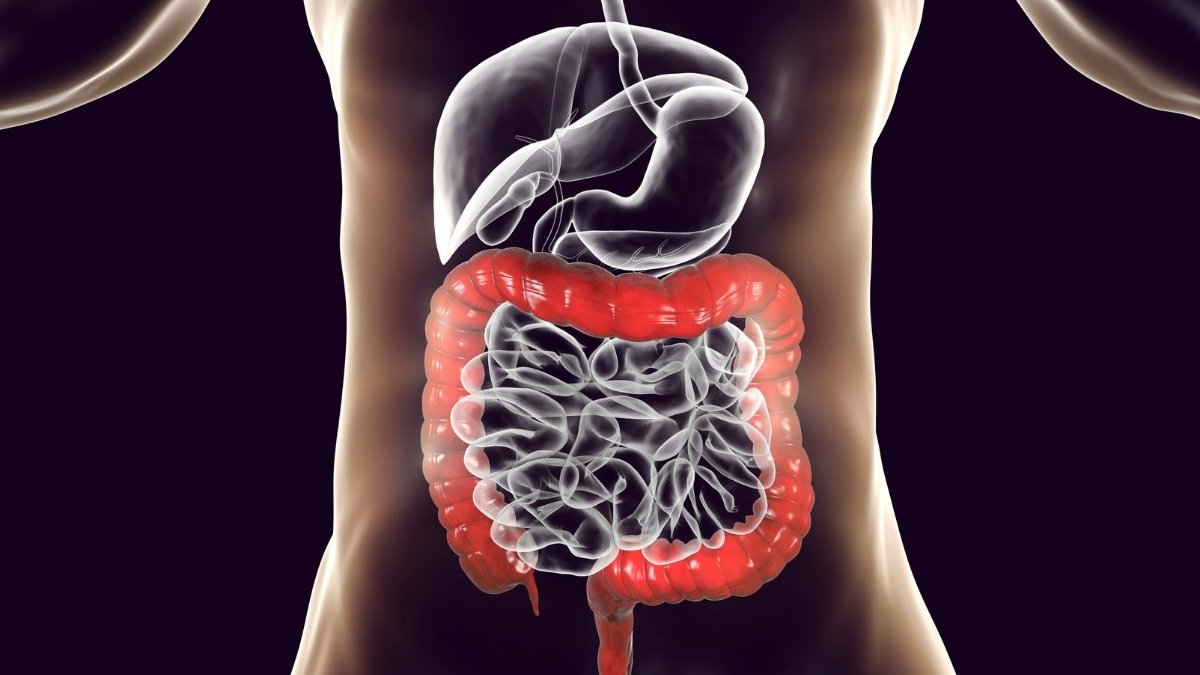Dr. Sarah Martinez watched her patient’s face crumble as she explained why her “perfect” Mediterranean diet was causing severe digestive distress.
“But I eat organic everything,” the woman protested. “Quinoa bowls, Greek yogurt, kombucha. I follow all the healthy eating rules.”
This scene plays out in gastroenterology offices across America every day. People who’ve eliminated junk food still suffer from bloating, cramping, and digestive chaos. They’re doing everything “right” but feeling worse than ever.
The problem isn’t your commitment to healthy eating. It’s that many healthy foods contain hidden gut destroyers that wreck your digestive health. That protein bar with 20 grams of protein also has ingredients that trigger diarrhea. Your morning smoothie bowl might be loaded with fiber compounds that cause severe bloating.
Even gastroenterologist recommendations get twisted by food marketing. Companies take genuinely healthy ingredients and process them into gut-damaging products. They slap “organic” and “natural” labels on foods that inflame your intestinal lining.
You deserve to know which supposedly healthy foods are actually sabotaging your digestive health. In this guide, you’ll discover 18 specific gut destroyers lurking in healthy meals, backed by expert explanations from leading gastroenterologists. More importantly, you’ll learn simple swaps that protect your gut while keeping your diet nutritious.
Your stomach pain after “healthy” meals isn’t in your head. It’s a warning sign that something’s wrong with these so-called superfoods.
The Silent Gut Health Crisis in Modern “Healthy” Eating

You’re doing everything right. You buy organic vegetables. You read labels. You avoid junk food. Yet your stomach still hurts after meals.
You’re not alone. A shocking 74% of Americans deal with digestive discomfort despite trying to eat healthy. Something’s wrong with this picture.
Here’s the truth: many foods that damage gut health hide behind health claims. That “natural” granola bar? It might contain 15 different additives. Your favorite yogurt? It could be packed with artificial sweeteners that mess with your gut bacteria.
Food companies know how to play the health game. They slap “organic” or “natural” on packages. But processing changes everything. Take whole wheat bread. The wheat starts natural. Then factories grind, bleach, and add preservatives. By the time it reaches you, it’s nothing like the original grain.
Your gut doesn’t care about marketing claims. It only responds to what’s actually in your food.
Dr. Sarah Chen, a gastroenterologist at Johns Hopkins, sees this daily. “Patients come in eating what they think are healthy foods,” she says. “But these products still cause digestive inflammation because of hidden ingredients.”
The numbers tell the story. IBS now affects 45 million Americans. That’s more people than live in California and Nevada combined. Digestive disorders have jumped 60% since 2000. This isn’t normal aging or stress. This is our food supply changing faster than our bodies can adapt.
Here’s what’s really scary: the average person now eats over 150 different food additives every day. Your great-grandmother ate maybe 10. These chemicals don’t just pass through you. They stick around. They change your gut bacteria. They trigger inflammation.
Some additives are obvious, like artificial colors. Others hide behind innocent names. “Natural flavors” can include dozens of chemicals. Carrageenan sounds fancy but causes gut problems in many people. Even “healthy” protein powders often contain emulsifiers that disrupt your gut microbiome.
The solution isn’t perfect eating. It’s smarter eating. You need to know which foods actually help your gut and which ones hurt it, no matter what the package says.
Your digestive system is trying to tell you something. Those stomach aches after “healthy” meals aren’t in your head. They’re your gut’s way of saying the current approach isn’t working.
It’s time to listen.
Category 1 – Processed “Health” Foods

These foods look healthy on the shelf. They promise better nutrition. They make you feel good about your choices. But they’re secretly wrecking your gut.
1. Protein Bars with Sugar Alcohols
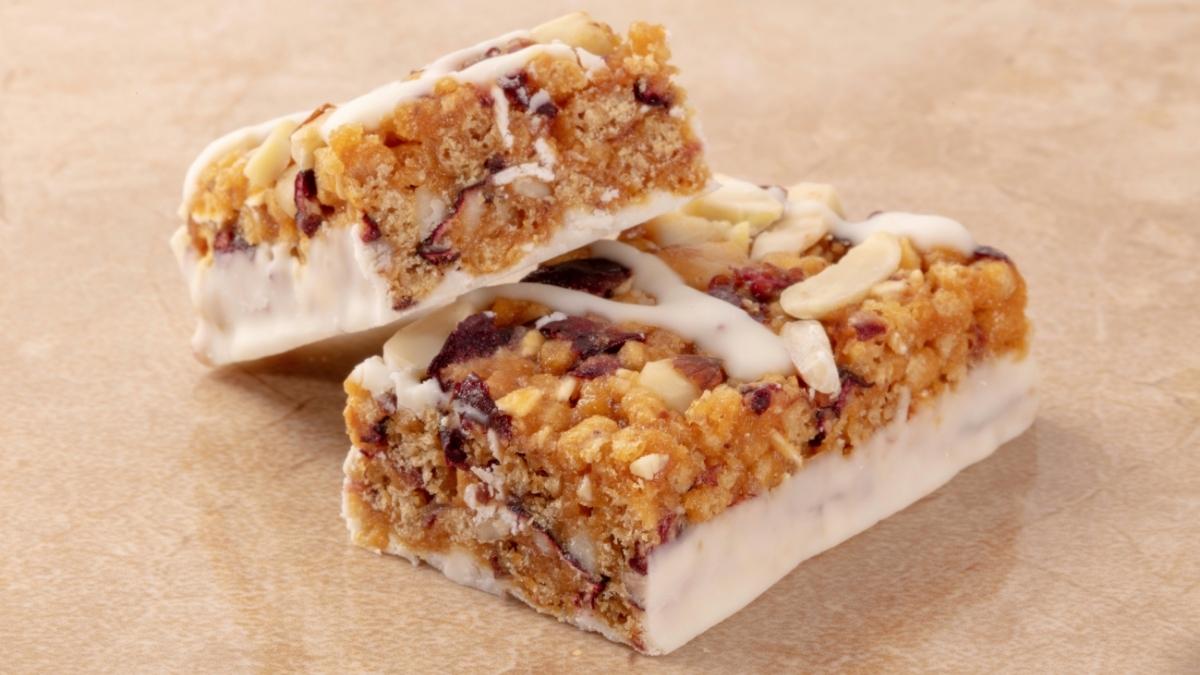
That Quest bar with 20 grams of protein? It also has 20+ grams of sugar alcohols like erythritol and maltitol. Your body can’t absorb these fake sugars properly. They sit in your intestines and pull water in. This causes osmotic diarrhea – basically, your gut floods itself trying to dilute these chemicals.
Worse, these sugar alcohols feed bad bacteria. They create an environment where harmful microbes grow faster than good ones. You get bacterial overgrowth, which means more gas, more bloating, and more stomach pain.
Popular brands like Atkins, Pure Protein, and many “keto” bars are loaded with these gut bombs. Check the label. If you see words ending in “-ol,” your stomach won’t thank you later.
2. Gluten-Free Packaged Foods
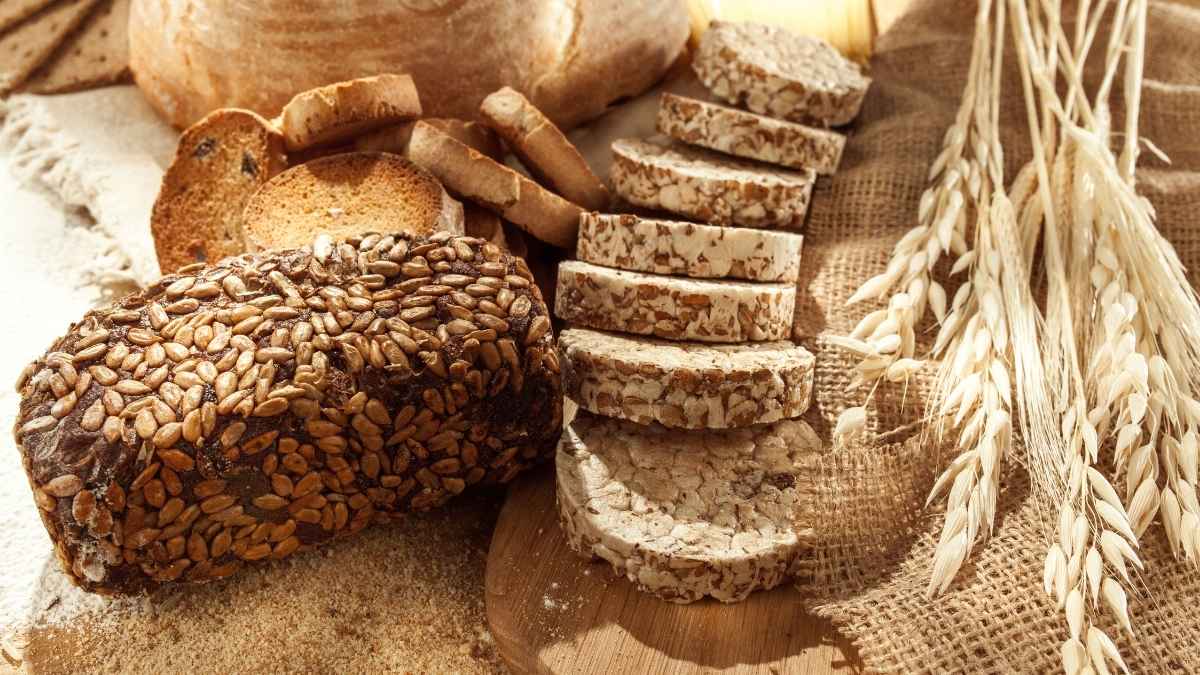
Going gluten-free should help your gut, right? Not when companies replace wheat with eight different gums and thickeners.
Canyon Bakehouse bread contains xanthan gum, guar gum, cellulose gum, and more. These bind ingredients together, but they also bind up your digestive system. They’re like edible glue that irritates your gut lining.
Your intestines work hard to break down one or two of these gums. When you eat 8+ different ones in a single slice of bread, your gut gets overwhelmed. The result? Inflammation, pain, and digestive problems that are often worse than gluten itself.
3. Flavored Greek Yogurt
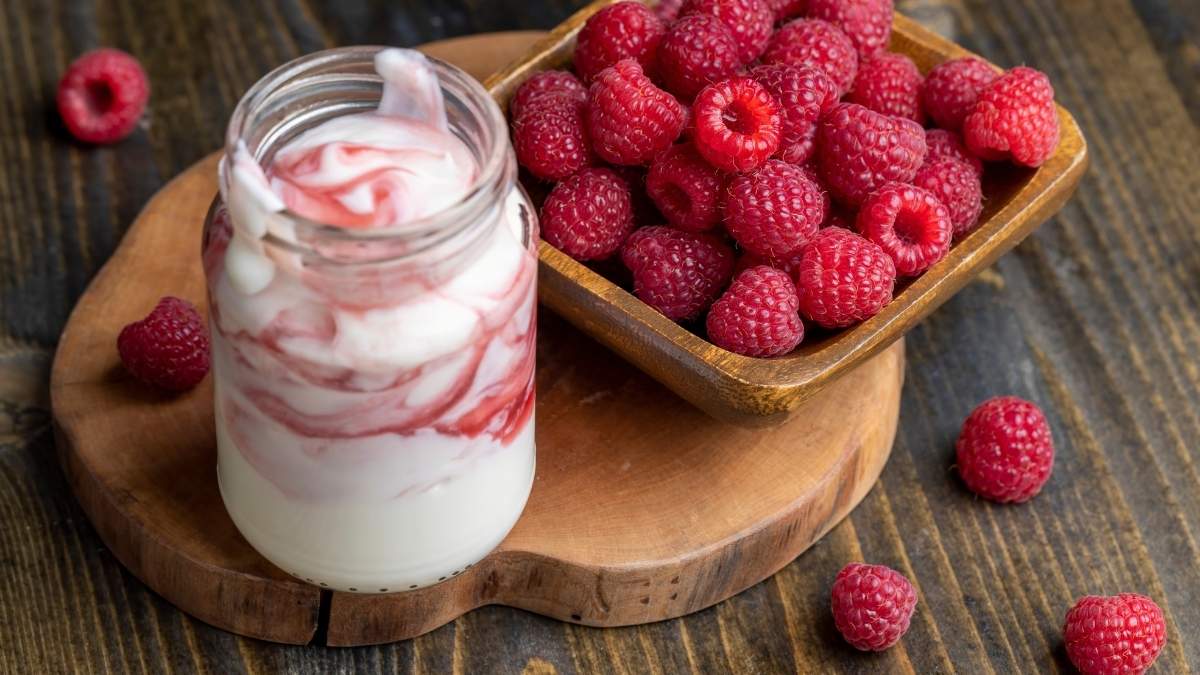
Plain Greek yogurt helps your gut. Flavored versions destroy it.
Dannon Light & Fit contains sucralose and acesulfame potassium. These artificial sweeteners don’t just pass through you. They stick around and kill beneficial bacteria. Studies show artificial sweeteners can wipe out up to 50% of your good gut bacteria within days.
Yoplait Two Good seems healthy with only 2 grams of sugar. But it gets that sweetness from stevia extract and monk fruit – processed versions that still disrupt your microbiome. Your gut bacteria can’t tell the difference between “natural” and artificial when both are highly processed chemicals.
4. Granola and “Healthy” Cereals
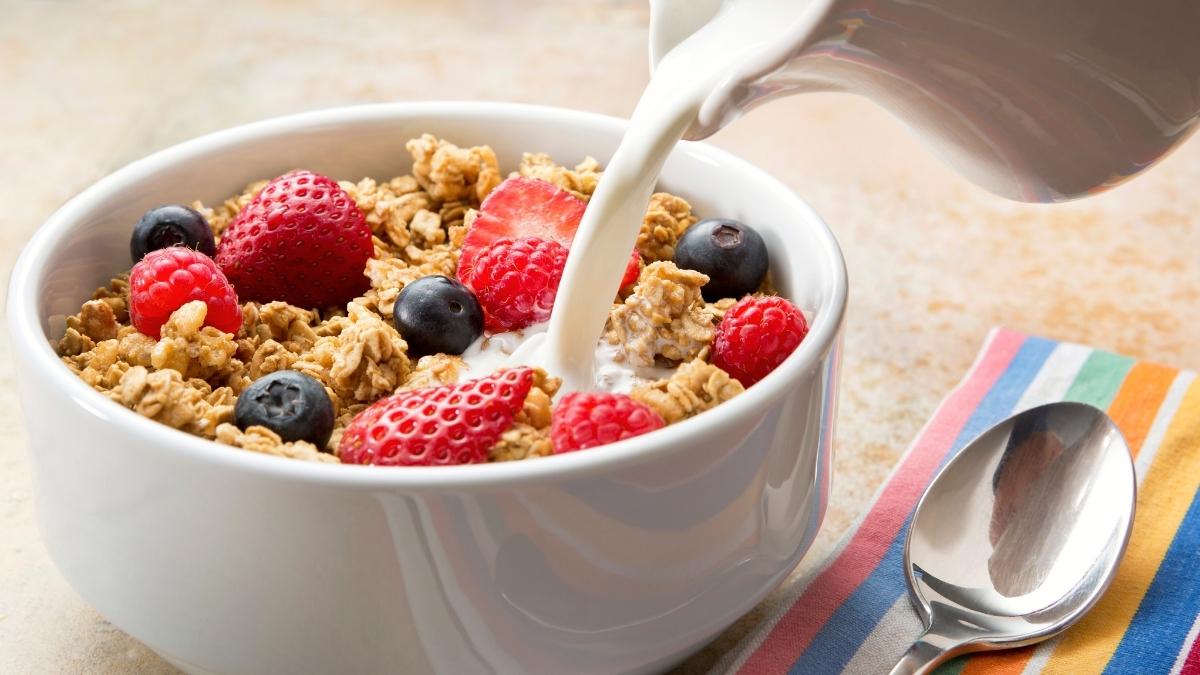
That Bear Naked granola looks wholesome. But it’s packed with high FODMAP ingredients like honey, dried fruit, and inulin fiber. FODMAPs are sugars that many people can’t digest properly. They ferment in your gut and create gas.
Kashi cereals often contain chicory root fiber and Jerusalem artichoke. These sound healthy, but they’re FODMAP bombs for people with sensitive stomachs. One bowl can trigger hours of bloating and cramping.
Even “low sugar” granolas use dates and coconut nectar. Your gut doesn’t care what kind of sugar it is. Too much of any sugar feeds bad bacteria and creates digestive chaos.
5. Plant-Based Meat Alternatives
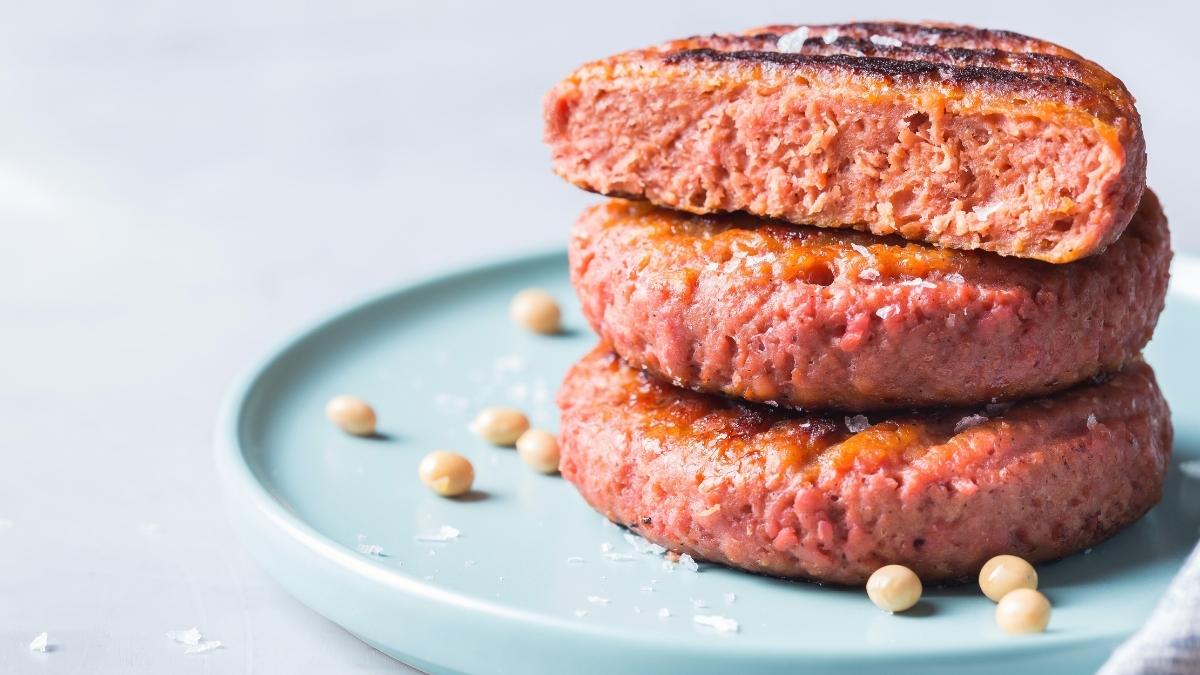
Beyond Meat and Impossible burgers seem like healthy swaps. But check what holds them together: methylcellulose and carrageenan.
Methylcellulose is literally used to make laxatives. It’s added to fake meat to create texture, but it irritates your intestinal walls. Carrageenan comes from seaweed but causes inflammation in many people. The FDA has received hundreds of complaints about digestive problems linked to carrageenan.
These fake meats also contain pea protein isolate and soy protein isolate. “Isolate” means they’ve stripped away everything except pure protein. This processing creates compounds that can trigger digestive inflammation in sensitive people.
6. Pre-Made Smoothie Bowls
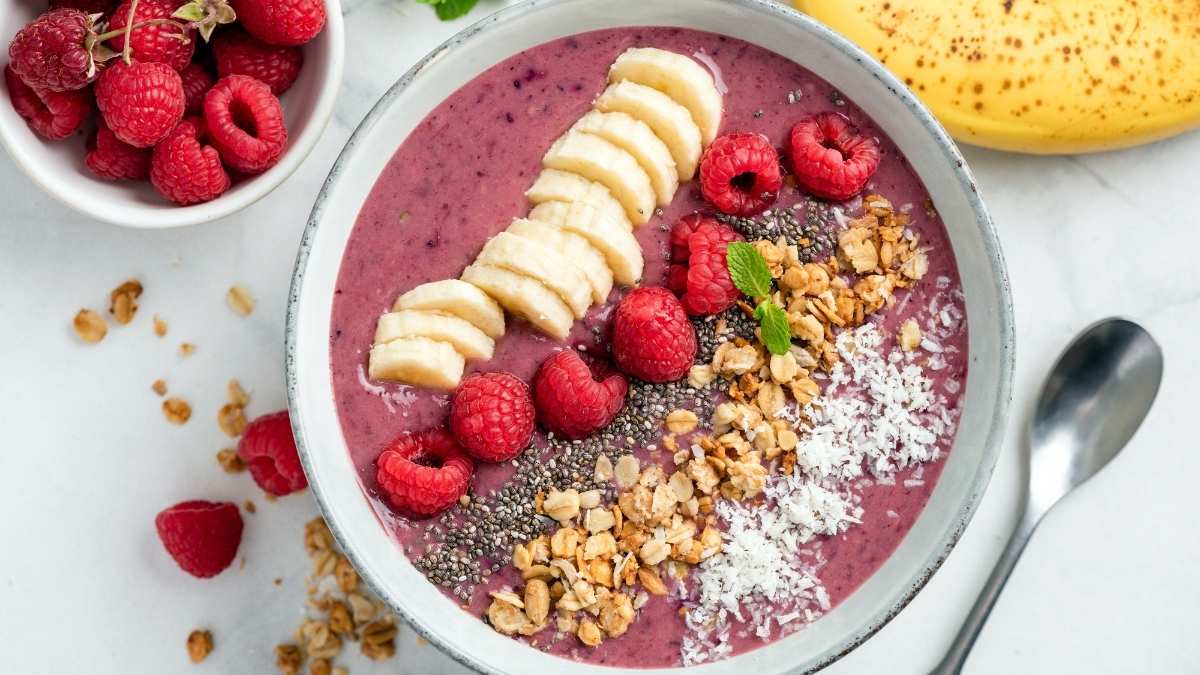
Those Instagram-worthy Sambazon bowls contain up to 15 grams of inulin fiber. Inulin is great for gut health in small amounts. But 15 grams at once is like setting off a gas bomb in your intestines.
Your gut bacteria go crazy when they get this much fiber suddenly. They produce massive amounts of gas as they try to break it down. The result? Severe bloating that can last for hours.
Many frozen smoothie bowls also contain Jerusalem artichoke powder and chicory root – more sources of inulin that pile onto the overload.
Category 2 – Restaurant and Takeout “Healthy” Options

You order the salad instead of the burger. You choose grilled over fried. You pick the quinoa bowl. Then you spend the next three hours with stomach pain.
Restaurant “healthy” food isn’t what it seems. Behind the scenes, kitchens use cheap ingredients and shortcuts that destroy your gut health.
7. Salad Dressings
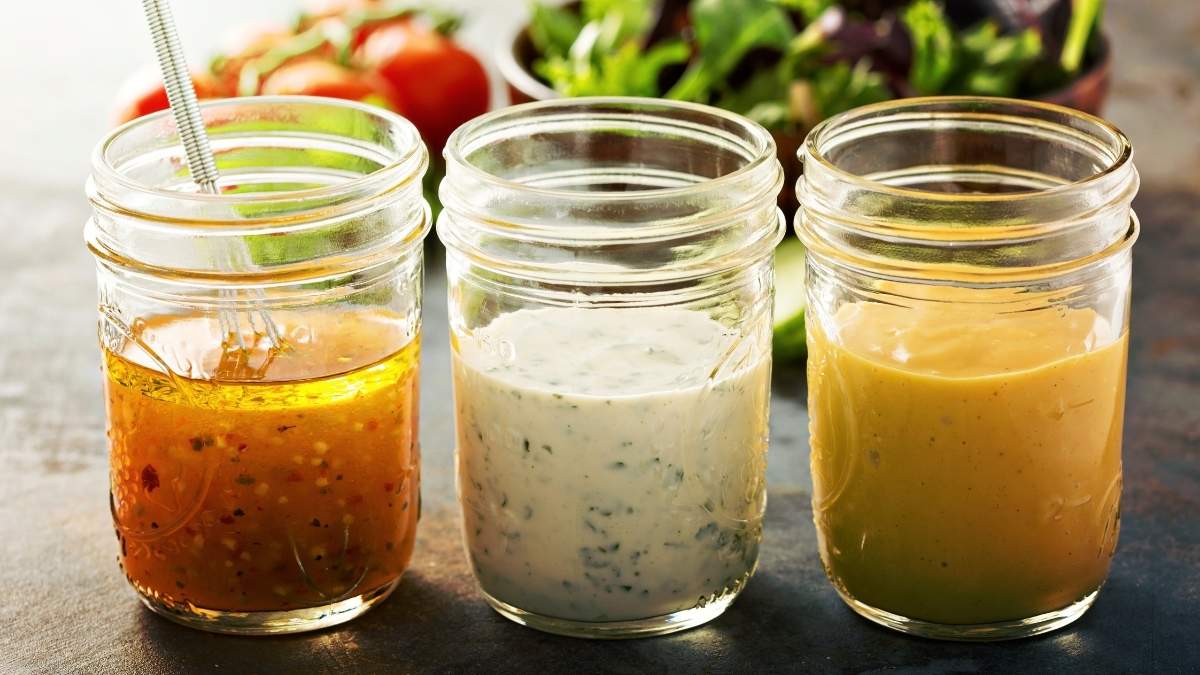
That innocent ranch or vinaigrette is loaded with soybean oil. Restaurants buy it in huge containers because it’s cheap. Soybean oil is high in omega-6 fatty acids that cause inflammation in your gut lining.
Most commercial dressings also contain sodium benzoate and potassium sorbate as preservatives. These chemicals kill bacteria – including the good bacteria in your gut. One salad with commercial dressing can wipe out beneficial microbes you’ve been trying to build up.
Even “olive oil” dressings at chain restaurants often contain mostly soybean oil with a tiny bit of olive oil for the name. Your gut gets hit with inflammatory oils disguised as healthy fats.
8. Grilled Vegetables
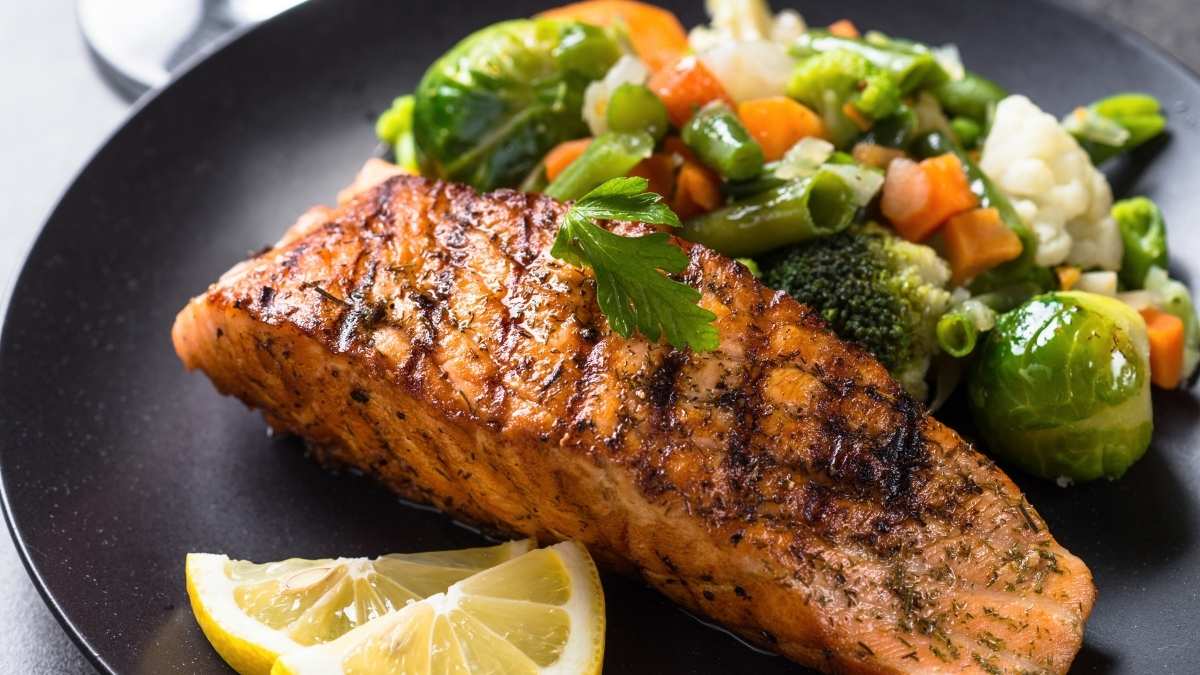
Grilled veggies sound perfect for gut health. But restaurant grills are contamination zones.
The same grill that cooked gluten-filled buns now cooks your zucchini. Cross-contamination happens with every order. If you’re sensitive to gluten, even tiny amounts can trigger digestive inflammation that lasts for days.
Dr. Martinez, a nutritionist who audits restaurant kitchens, explains: “Most restaurants use the same oil for everything. Your ‘healthy’ grilled vegetables are cooked in the same seed oils used for french fries. Customers think they’re getting clean food, but they’re getting inflammatory oils with every bite.”
9. Quinoa Bowls
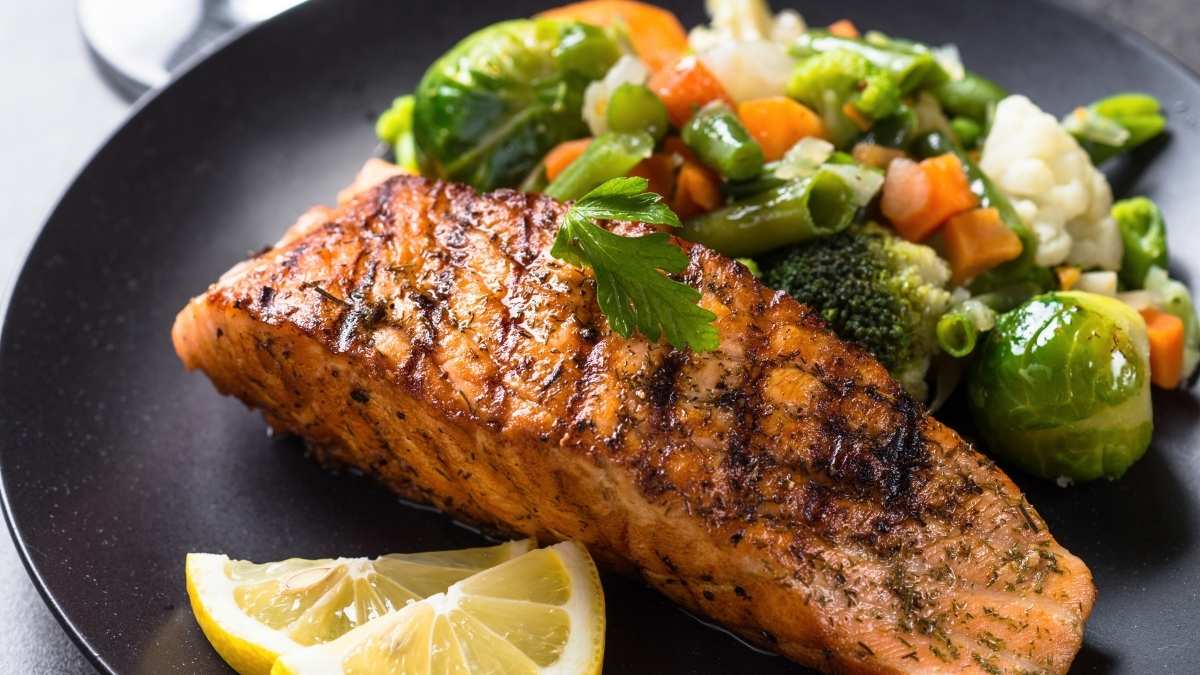
Quinoa bowls became the go-to healthy option. But quinoa is extremely high in oxalates – compounds that bind to minerals and prevent absorption.
One large quinoa bowl can contain 500+ milligrams of oxalates. That’s enough to block calcium and magnesium absorption for hours. Your gut needs these minerals to function properly. Without them, digestive muscles can’t contract normally, leading to bloating and constipation.
Restaurants often cook quinoa in vegetable broth loaded with MSG and artificial flavors. These additives irritate sensitive stomachs and can trigger digestive inflammation in people with IBS.
10. Kombucha on Tap

Draft kombucha at trendy restaurants seems like a gut health win. But unpasteurized kombucha contains live bacteria and yeast that can overgrow in your system.
For people with SIBO (small intestinal bacterial overgrowth), kombucha can make symptoms much worse. The extra bacteria compete with your natural gut bacteria and create more gas and bloating.
Restaurant kombucha also sits in tap lines that may not be cleaned properly. Harmful bacteria can grow in these lines and contaminate every glass. You think you’re getting probiotics, but you might be getting a gut infection.
11. Acai Bowls
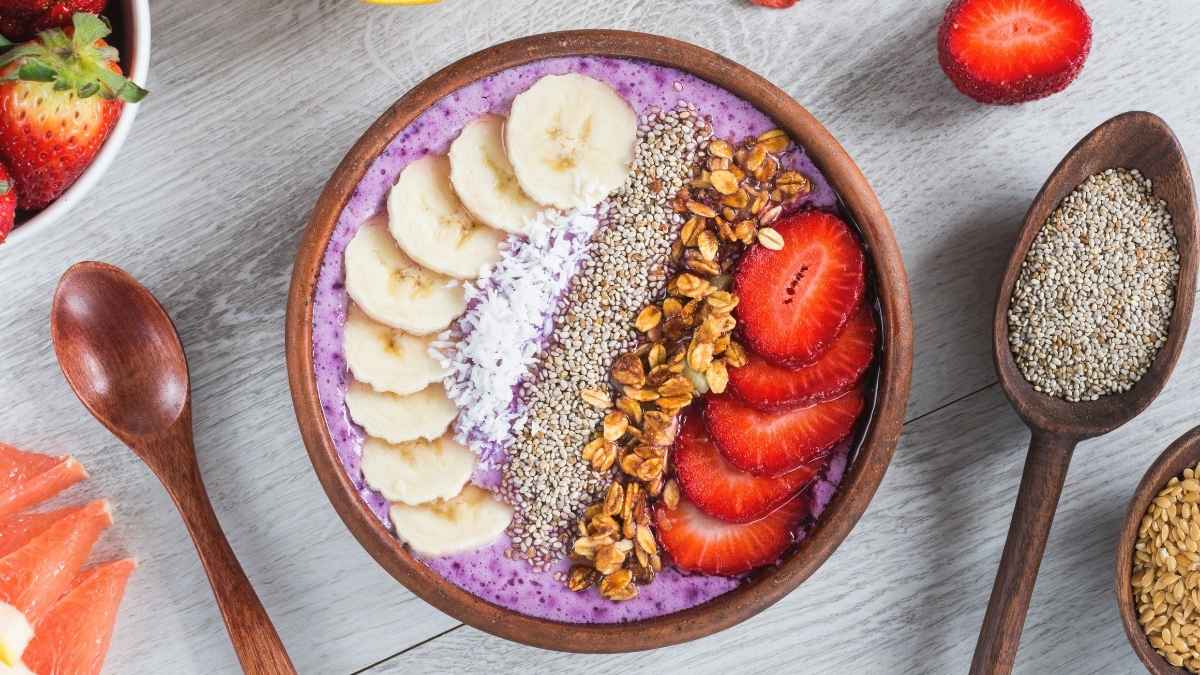
Those beautiful purple bowls pack 40+ grams of sugar from multiple fruit sources. Your gut bacteria go wild when they get this much sugar at once.
The combination of acai, banana, mango, and berries creates perfect conditions for fermentation in your intestines. Different fruits ferment at different rates, creating gas and bloating that can last for hours.
Most acai bowls also contain fruit juice concentrates and syrups. This pushes the sugar content even higher and feeds harmful bacteria that cause digestive problems.
12. Cold-Pressed Juices

That $12 green juice concentrates the fructose from 6-8 pieces of fruit into one drink. Your liver and gut can’t handle this fructose bomb.
When you eat whole fruit, fiber slows sugar absorption. Juice removes the fiber but keeps all the sugar. This overwhelms your digestive system and feeds bad bacteria.
Cold-pressed vegetable juices often contain high amounts of oxalates from spinach and kale. Without the fiber to slow absorption, these oxalates hit your system all at once and can cause kidney stones and mineral deficiencies.
The Restaurant Reality
Gastroenterologists report a 40% increase in digestive complaints from patients who eat out frequently. The problem isn’t that people are ordering junk food. It’s that “healthy” restaurant options use processed ingredients and cooking methods that damage gut health.
Dr. Sarah Chen notes: “I see patients who eat perfectly at home but get sick every time they dine out. They’re ordering salads and grilled vegetables, but these foods are prepared with inflammatory oils and contaminated on shared equipment.”
What This Means for You
Restaurant kitchens prioritize speed and profit over gut health. Even when you make smart menu choices, the preparation methods can undo your efforts.
This doesn’t mean you can never eat out. It means you need to know which “healthy” options actually help your gut and which ones hurt it. Knowledge is your best defense against restaurant gut bombs.
Category 3 – Home Cooking Hidden Dangers

You cook at home to avoid restaurant problems. You follow healthy recipes. You buy organic ingredients. But your stomach still rebels after meals you made yourself.
The issue isn’t your cooking skills. It’s that many “healthy” home cooking trends actually harm your gut.
13. Coconut Flour Baking
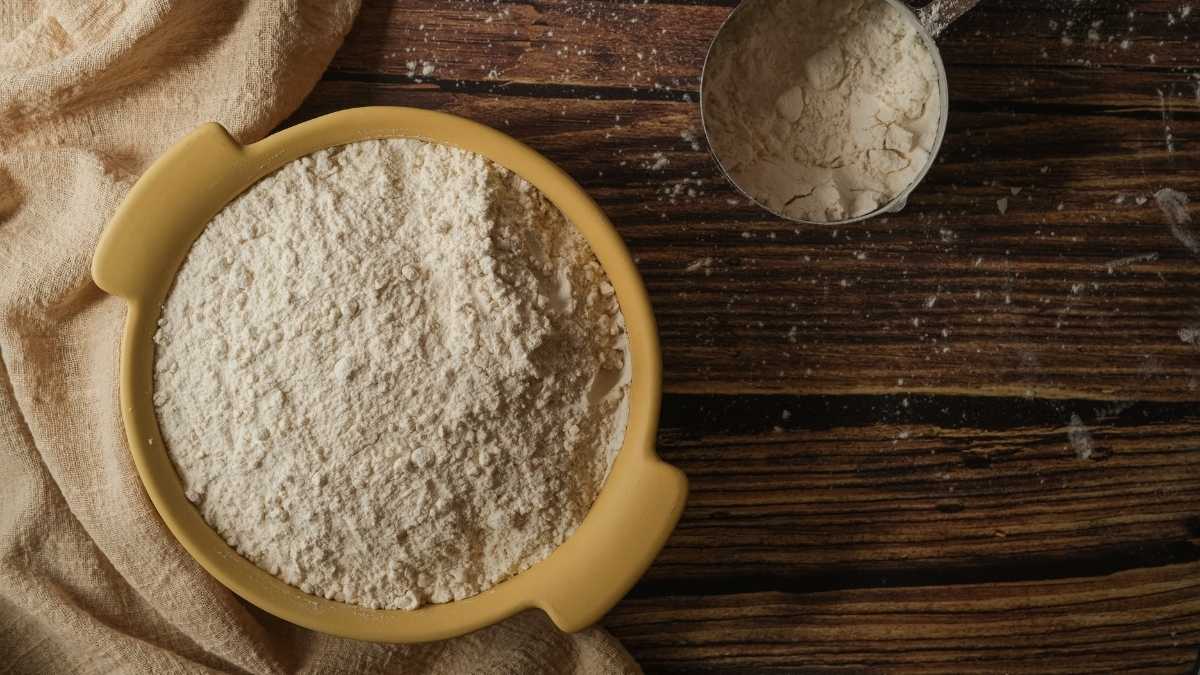
Coconut flour became the gluten-free hero. But it contains 58% fiber – more than any other flour. Your digestive system can’t handle this fiber bomb.
One coconut flour muffin delivers 15+ grams of fiber. That’s half your daily need in one small serving. This extreme fiber density pulls water from your body and creates concrete-like stools. You get constipated for days.
The fiber in coconut flour also feeds bacteria too quickly. Your gut microbes produce excess gas as they try to break down this fiber overload. The result? Painful bloating and cramping that can last for hours.
14. Raw Cruciferous Vegetables
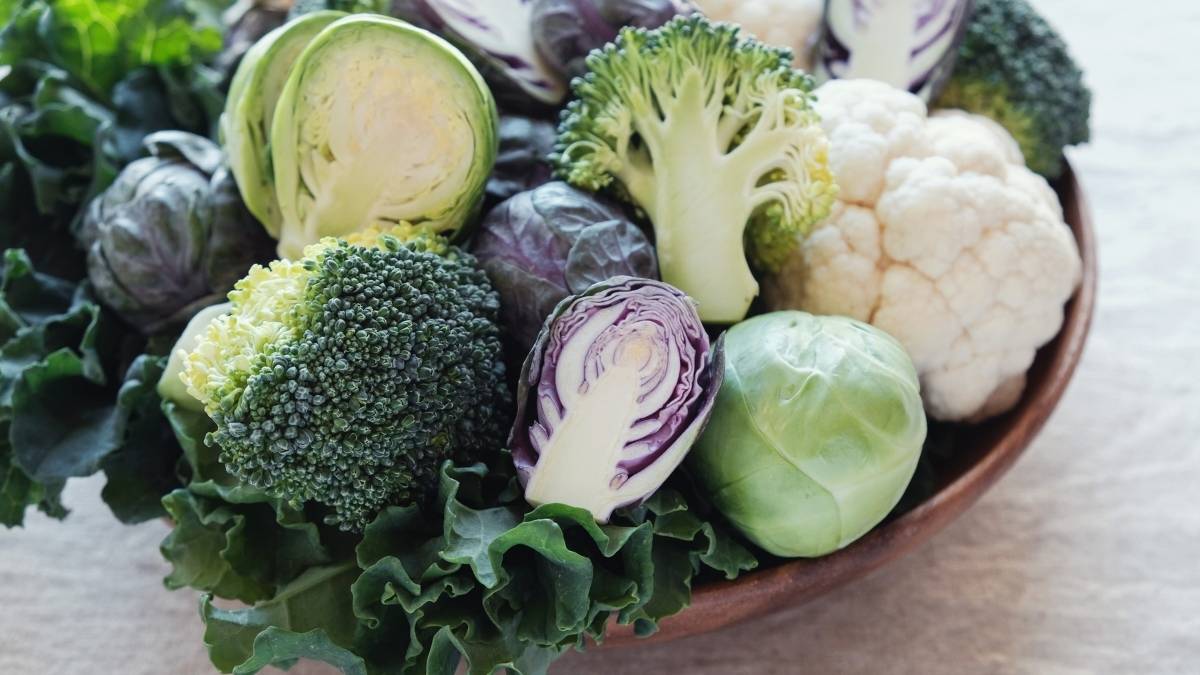
Raw kale, broccoli, and cauliflower are packed with nutrients. They’re also loaded with goitrogens – compounds that interfere with your thyroid.
Your thyroid controls digestion speed. When goitrogens slow down your thyroid, food sits in your stomach longer. This causes acid reflux, bloating, and bacterial overgrowth.
Raw cruciferous vegetables are also hard to digest. Your gut works overtime trying to break down these tough fibers. Many people get severe gas and stomach pain from raw veggie smoothies and salads.
Simple fix: Steam or lightly cook these vegetables. Heat breaks down goitrogens and makes the nutrients easier to absorb.
15. Overnight Oats
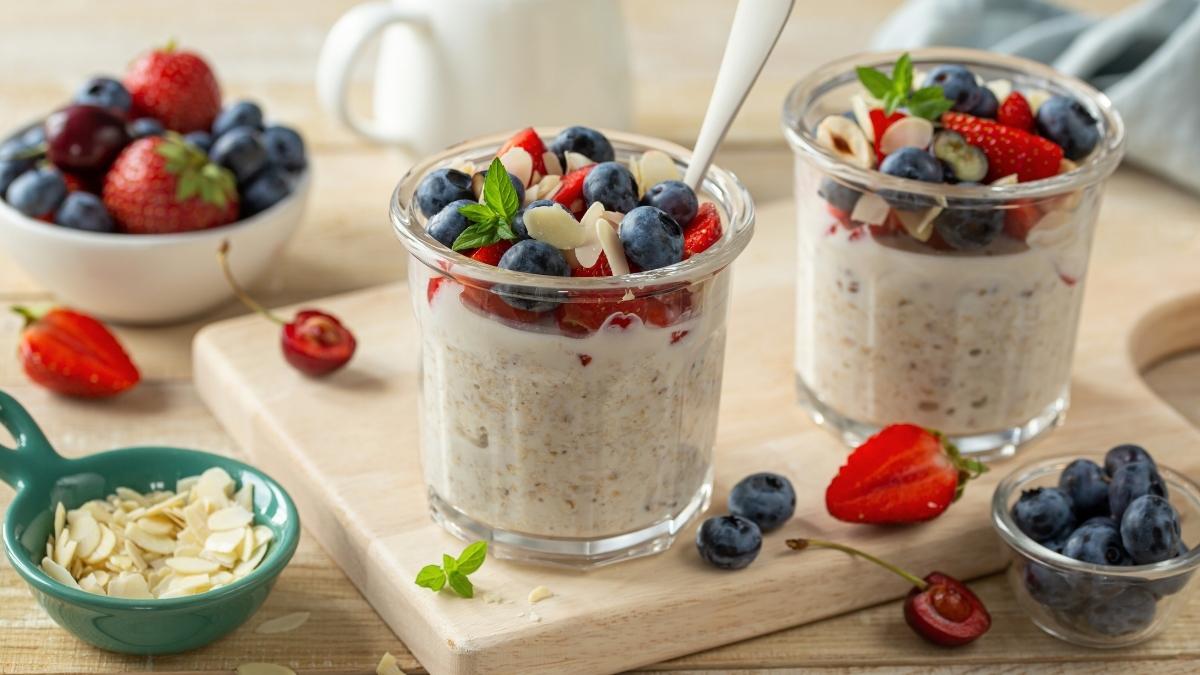
Pinterest loves overnight oats, but your gut doesn’t. Raw oats contain phytic acid – a compound that blocks mineral absorption and irritates your intestinal lining.
Soaking oats overnight doesn’t remove enough phytic acid. You need proper preparation to make oats gut-friendly.
The right way: Soak oats for 12-24 hours in water with 1 tablespoon of acid (lemon juice or apple cider vinegar). This breaks down phytic acid and makes minerals available. Rinse before eating.
16. Fermented Foods Done Wrong
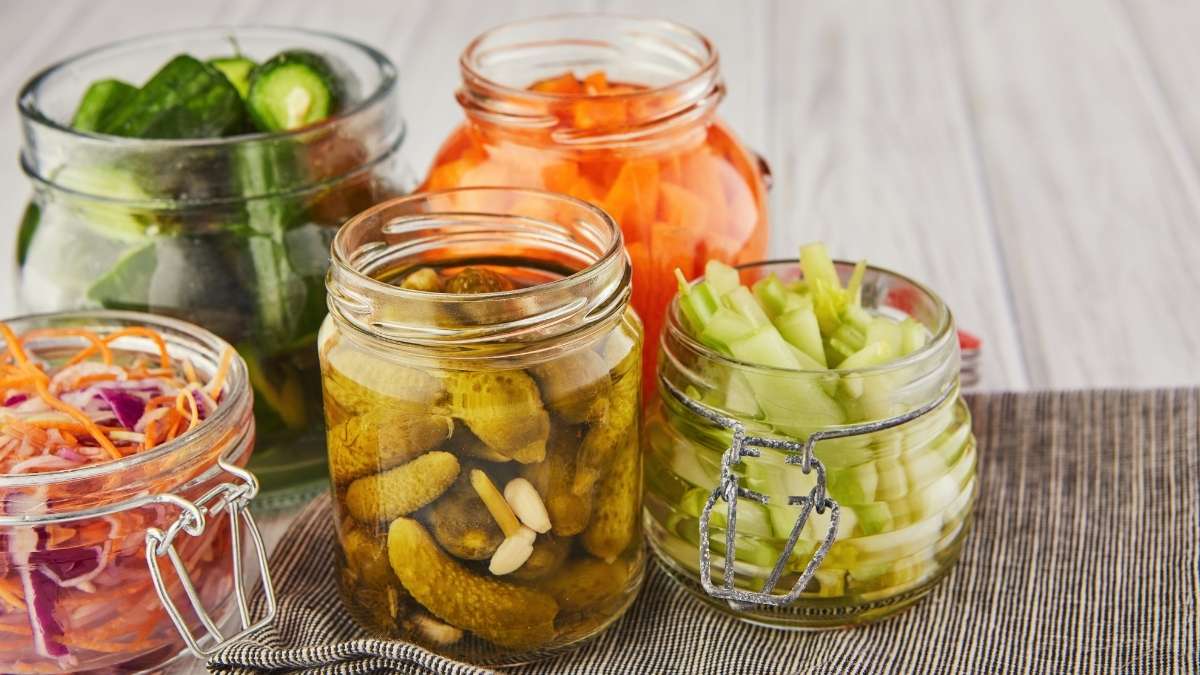
Homemade sauerkraut and kimchi can heal your gut. But improper fermentation creates harmful bacteria instead of helpful ones.
Many people ferment at room temperature without controlling salt levels or pH. This allows bad bacteria like E. coli and salmonella to grow alongside good bacteria.
Safe fermentation rules:
- Use 2-3% salt by weight
- Keep vegetables below brine level
- Ferment in cool temperatures (65-75°F)
- Test pH – it should be below 4.0 after 3-4 days
17. High-FODMAP “Superfoods”
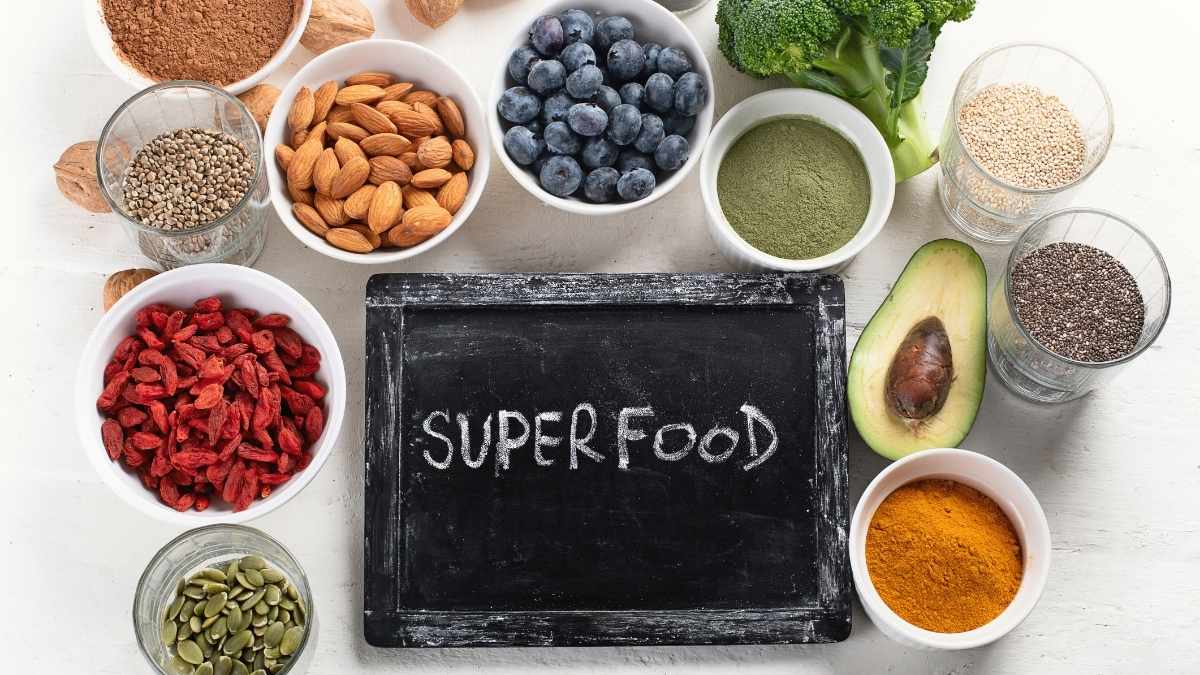
Garlic and onions appear in every healthy recipe. But they’re high in FODMAPs – sugars that many people can’t digest properly.
These “superfoods” ferment in your gut and create gas. If you have IBS, even small amounts can trigger hours of pain and bloating.
FODMAP-friendly swaps:
- Use garlic-infused oil instead of fresh garlic
- Replace onions with scallion greens (green parts only)
- Choose low-FODMAP fruits like berries over apples and pears
18. Alkaline Water

Alkaline water promises to balance your body’s pH. But your stomach needs to be acidic to digest food properly.
Drinking alkaline water with meals dilutes stomach acid. Without enough acid, proteins don’t break down completely. This leads to bacterial overgrowth and digestive inflammation.
Your stomach acid also kills harmful bacteria in food. When you neutralize this acid, you’re more likely to get food poisoning and gut infections.
Better choice: Drink plain water between meals, not during them. Let your stomach maintain its natural acidity for proper digestion.
The Home Cooking Truth

Cooking at home is still your best option for gut health. But following every health trend can backfire.
Your gut needs properly prepared foods, not just “healthy” ingredients thrown together. Small changes in how you prepare these foods can mean the difference between digestive comfort and hours of pain.
The goal isn’t to avoid all these foods forever. It’s to prepare them in ways that support your gut instead of harming it. Sometimes the healthiest choice is also the simplest one.
What Gastroenterologists Recommend Instead

You’ve learned what hurts your gut. Now here’s what actually helps it heal.
These gastroenterologist approved diet tips come from doctors who see digestive problems every day. They know which foods work and which ones just sound good on paper.
Simple Foods Win Every Time

Skip the fancy health products. Your gut loves simple, recognizable ingredients.
Instead of protein bars packed with sugar alcohols, eat hard-boiled eggs with a handful of almonds. Real food gives you protein without the digestive chaos. Your gut knows how to handle an egg. It has no idea what to do with 15 different gums and artificial sweeteners.
Replace that flavored Greek yogurt with plain yogurt and fresh berries. You get the same probiotics without the gut-destroying artificial sweeteners. Add a drizzle of honey if you need sweetness. Your gut bacteria actually benefit from small amounts of real sugar.
Master These Food Swaps
These gut-friendly food alternatives solve most digestive problems:
For cooking: Use olive oil or avocado oil instead of vegetable oil. These oils reduce inflammation instead of causing it. Your gut lining heals faster when you stop hitting it with inflammatory seed oils every day.
For fiber: Choose cooked vegetables over raw ones. Steaming broccoli breaks down tough fibers and makes nutrients easier to absorb. You get the same vitamins without the gas and bloating.
For grains: Pick white rice over brown rice if you have digestive issues. White rice is easier to digest and less likely to cause inflammation. Brown rice might seem healthier, but not if it tears up your gut lining.
Timing Matters More Than You Think
When you eat probiotics affects how well they work. Take probiotic supplements on an empty stomach, 30 minutes before breakfast. Stomach acid is weaker then, so more good bacteria survive the trip to your intestines.
Don’t drink water with meals. It dilutes digestive enzymes and stomach acid. Drink water 30 minutes before eating or 2 hours after. This lets your stomach do its job properly.
Safe Cooking Methods That Heal
How you cook matters as much as what you cook. These methods preserve gut health:
Steam vegetables instead of eating them raw. Heat breaks down antinutrients and makes minerals available. Your gut gets nutrition without the irritation.
Soak grains and legumes before cooking. This removes compounds that block nutrient absorption and cause gas. Soak oats overnight with a splash of lemon juice. Soak beans for 12+ hours with a pinch of baking soda.
Cook at lower temperatures when possible. High heat creates compounds that irritate your gut lining. Slow cooking and steaming preserve nutrients and create gut-friendly foods.
Food Combining That Works
Eat protein and non-starchy vegetables together. This combination is easy on your digestive system. Think chicken with steamed broccoli or fish with sautéed spinach.
Eat fruit alone or before meals, not after. Fruit digests quickly and can ferment if it sits on top of slower-digesting foods. This creates gas and bloating.
Don’t mix too many different foods in one meal. Your gut produces different enzymes for different foods. Simple meals digest better than complex ones.
The 80/20 Rule
Aim for 80% whole foods and 20% everything else. This gives you flexibility while keeping your gut healthy. You don’t need perfect eating. You need consistent good choices.
Focus on what you can add, not just what to avoid. Add bone broth for gut-healing nutrients. Add fermented vegetables for probiotics. Add cooked vegetables for easy-to-digest fiber.
Start With One Change
Don’t overhaul your entire diet at once. Pick one swap from this list and stick with it for two weeks. Let your gut adjust before making more changes.
Your digestive system heals slowly. Give these changes time to work. Most people notice improvements within 2-4 weeks of consistent gut-friendly eating.
The 7-Day Gut Reset Protocol

Your gut needs a break from the foods that hurt it. This 7-day plan gives your digestive system time to heal while you build better habits.
Morning Routine (First 30 Minutes)
Start each day with 16 ounces of room temperature water. Your gut needs hydration after 8 hours without fluids. Cold water shocks your digestive system, so keep it neutral.
Take your probiotic 20 minutes after water, before any food. An empty stomach gives good bacteria the best chance to survive stomach acid.
Wait 30 minutes, then eat a simple breakfast. Try scrambled eggs with steamed spinach or plain yogurt with berries. Keep it simple so your gut can focus on healing instead of working overtime to digest complex meals.
Meal Timing That Heals
Eat every 4-5 hours. This gives your digestive system time to fully process each meal before the next one arrives. Constant snacking keeps your gut working all day without recovery time.
Stop eating 3 hours before bed. Your gut repairs itself while you sleep, but only if it’s not busy digesting food. Late meals disrupt this healing process.
Make lunch your biggest meal. Your digestive fire is strongest in the middle of the day. Heavy dinners sit in your stomach all night and create morning bloating.
Portion Control Made Simple
Use your hand to measure portions. One palm-sized protein, one cupped hand of cooked vegetables, and one thumb of healthy fat per meal. This prevents overwhelming your digestive system.
Chew each bite 20-30 times. Your stomach doesn’t have teeth. The more you break down food in your mouth, the easier digestion becomes. Most people chew only 5-10 times and wonder why they get bloated.
Evening Gut Repair Routine
Drink chamomile tea 1 hour before bed. Chamomile relaxes digestive muscles and reduces inflammation in your gut lining. This helps your intestines repair overnight.
Take a 10-minute walk after dinner. Gentle movement helps food move through your system properly. Sitting on the couch after eating slows digestion and creates gas.
Sleep 7-8 hours consistently. Your gut lining regenerates during deep sleep. Poor sleep disrupts this repair process and makes digestive problems worse.
Expert-Recommended Supplements
Take a high-quality probiotic with at least 10 billion CFUs. Look for multiple strains, not just one type of bacteria. Your gut needs diversity to function properly.
Add digestive enzymes if you feel bloated after meals. Take them with your first bite of food. They help break down proteins, fats, and carbs when your natural enzymes can’t keep up.
Consider L-glutamine powder before bed. This amino acid feeds the cells that line your intestines and helps repair damage from inflammatory foods. Start with 5 grams mixed in water.
What to Expect
Days 1-3: You might feel tired as your body adjusts. This is normal. Your gut is working less hard, so you have more energy for healing.
Days 4-5: Bloating should decrease. Your stomach might feel flatter in the mornings as inflammation goes down.
Days 6-7: Energy and mood improve. A healthy gut produces neurotransmitters that affect how you feel mentally and physically.
After the Reset
Don’t go back to old habits immediately. Add foods back slowly, one at a time. This helps you identify which specific foods cause your digestive problems.
Keep the timing and portion habits you’ve built. These simple changes often solve digestive issues permanently, even when you eat less-than-perfect foods occasionally.
Conclusion
You’ve been trying to eat healthy, but your gut kept fighting back. Now you know why.
Even dedicated healthy eaters unknowingly consume gut destroyers every day. The 18 foods identified by gastroenterologists explain why digestive issues persist despite your best efforts. Your stomach pain after that protein bar makes sense now. So does the bloating from your quinoa bowl.
The good news? Small swaps make massive differences in gut health.
You don’t need to overhaul your entire diet. Replace your sugar alcohol protein bars with hard-boiled eggs and nuts. Switch flavored yogurt for plain with berries. Cook your vegetables instead of eating them raw. These simple changes can end years of digestive discomfort.
Start with eliminating just 3 of these gut destroyers this week and notice the difference in your digestive comfort. Pick the ones you eat most often. Your gut will thank you within days.
Remember, protecting your gut health means being aware of hidden gut destroyers in healthy foods. Marketing claims don’t matter. Only your digestive system’s response tells the real story.

